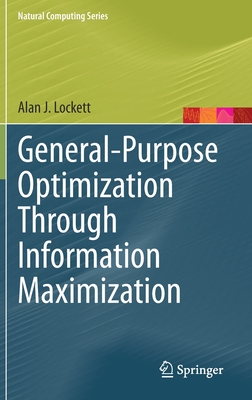Deep Generative Modeling
暫譯: 深度生成模型
Tomczak, Jakub M.
- 出版商: Springer
- 出版日期: 2022-02-19
- 售價: $3,500
- 貴賓價: 9.5 折 $3,325
- 語言: 英文
- 頁數: 216
- 裝訂: Hardcover - also called cloth, retail trade, or trade
- ISBN: 3030931579
- ISBN-13: 9783030931575
-
相關分類:
DeepLearning
-
相關翻譯:
深度生成模型(全彩) (簡中版)
-
其他版本:
Deep Generative Modeling, 2/e (Hardcover)
買這商品的人也買了...
-
 $2,928The R Book, 2/e (Hardcover)
$2,928The R Book, 2/e (Hardcover) -
 Time Series Analysis: Forecasting and Control, 5/e (Hardcover)
Time Series Analysis: Forecasting and Control, 5/e (Hardcover)$1,780$1,744 -
 Probabilistic Machine Learning: An Introduction (Hardcover)
Probabilistic Machine Learning: An Introduction (Hardcover)$2,650$2,597
相關主題
商品描述
This textbook tackles the problem of formulating AI systems by combining probabilistic modeling and deep learning. Moreover, it goes beyond typical predictive modeling and brings together supervised learning and unsupervised learning. The resulting paradigm, called deep generative modeling, utilizes the generative perspective on perceiving the surrounding world. It assumes that each phenomenon is driven by an underlying generative process that defines a joint distribution over random variables and their stochastic interactions, i.e., how events occur and in what order. The adjective deep comes from the fact that the distribution is parameterized using deep neural networks. There are two distinct traits of deep generative modeling. First, the application of deep neural networks allows rich and flexible parameterization of distributions. Second, the principled manner of modeling stochastic dependencies using probability theory ensures rigorous formulation and prevents potential flaws in reasoning. Moreover, probability theory provides a unified framework where the likelihood function plays a crucial role in quantifying uncertainty and defining objective functions.
Deep Generative Modeling is designed to appeal to curious students, engineers, and researchers with a modest mathematical background in undergraduate calculus, linear algebra, probability theory, and the basics in machine learning, deep learning, and programming in Python and PyTorch (or other deep learning libraries). It will appeal to students and researchers from a variety of backgrounds, including computer science, engineering, data science, physics, and bioinformatics, who wish to become familiar with deep generative modeling. To engage the reader, the book introduces fundamental concepts with specific examples and code snippets. The full code accompanying the book is available on github.
The ultimate aim of the book is to outline the most important techniques in deep generative modeling and, eventually, enable readers to formulate new models and implement them.
商品描述(中文翻譯)
這本教科書探討了通過結合概率建模和深度學習來構建人工智慧系統的問題。此外,它超越了典型的預測建模,將監督學習和非監督學習結合在一起。所產生的範式稱為深度生成建模(deep generative modeling),它利用生成的視角來感知周圍的世界。它假設每一個現象都是由一個潛在的生成過程驅動,該過程定義了隨機變數及其隨機互動的聯合分佈,即事件如何發生以及發生的順序。形容詞「深度」(deep)來自於該分佈是使用深度神經網絡進行參數化的事實。深度生成建模有兩個明顯的特徵。首先,深度神經網絡的應用允許對分佈進行豐富而靈活的參數化。其次,使用概率理論以原則性方式建模隨機依賴性,確保了嚴謹的公式化並防止推理中的潛在缺陷。此外,概率理論提供了一個統一的框架,其中似然函數在量化不確定性和定義目標函數方面扮演著關鍵角色。
《深度生成建模》旨在吸引對數學背景有一定了解的好奇學生、工程師和研究人員,這些背景包括本科微積分、線性代數、概率論,以及機器學習、深度學習和使用Python及PyTorch(或其他深度學習庫)的基礎知識。它將吸引來自計算機科學、工程、數據科學、物理學和生物信息學等多種背景的學生和研究人員,這些人希望熟悉深度生成建模。為了吸引讀者,這本書用具體的例子和代碼片段介紹基本概念。與本書配套的完整代碼可在github上獲得。
這本書的最終目標是概述深度生成建模中最重要的技術,並最終使讀者能夠構建新的模型並實施它們。












